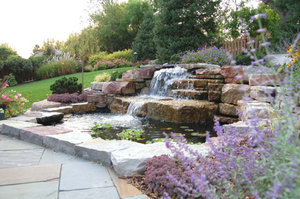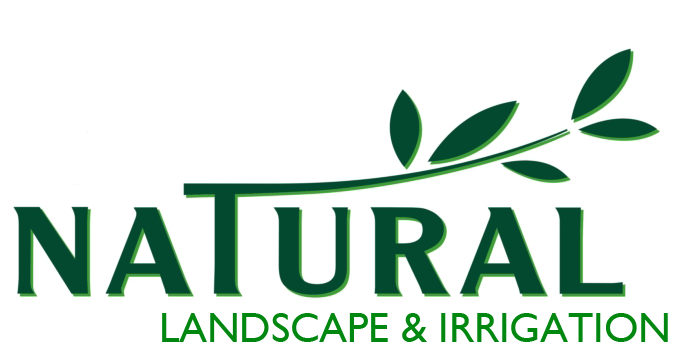Three Ways to Build a Pond
Ponds with preformed liners.
Perhaps you’ve seen these preformed plastic or Fiberglas liners at home building stores or garden centers. They are attractively shaped and ready to be strapped to the roof of your car. They are appealing in that they take all the guesswork out of pond design. On the other hand, what you see is what you get. There’s no chance of altering the shape to suit that little bend in the landscape you forgot about. They are also difficult to combine with waterfalls because it’s hard to build up a natural looking rise for the waterfall and also difficult to hid the water pump.
Still, preformed liners are relatively easy to install. You simply dig a big hole and pop them in. The trick is make sure they’re level so that water won’t spill out or look awkward. Their decided advantage is their sturdiness. Kids can walk in them. Rocks can be tossed in them. And they are designed to avoid cracking and leaks. Also, preformed pools support themselves and can therefore be used aboveground on a deck or terrace.
Ponds with rubber liners.
As a liner, rubber is an excellent material because it can be formed in any shape. For instance, if you start digging your pond and realize you’d like to have it wider in the sunshine and narrower in the shade, you can alter it. Rubber liners come in big sheets or on big rolls. Rather like buying fabric by the yard, you buy a piece of liner in the size you want.
The downside to rubber liners is that they can spring a leak if you’re not careful. To protect them from any rocks that might be in the soil, lay a good idea to add a filter cloth or geotextile. When installing the liner, only walk on it in stocking feet. And don’t use any sharp tools in its vicinity. This may seem obvious, but on more than one occasion, I’ve caught my crew spreading pebbles across the bottom with a rake. It’s an easy mistake to make. One more thing: If rocks or pebbles are used to line the pond bottom or ledges you’ve created, they need to be rounded.
Despite all these warnings, rubber-lined ponds are wonderful. Carefully installed, they can last indefinitely. Over the 20 years I’ve had my business, I’ve had only one spring a leak. While annoying, a leak is not tragic; it can be patched with a rubber weld, a job that involves high heat and is best left to a pond expert.

